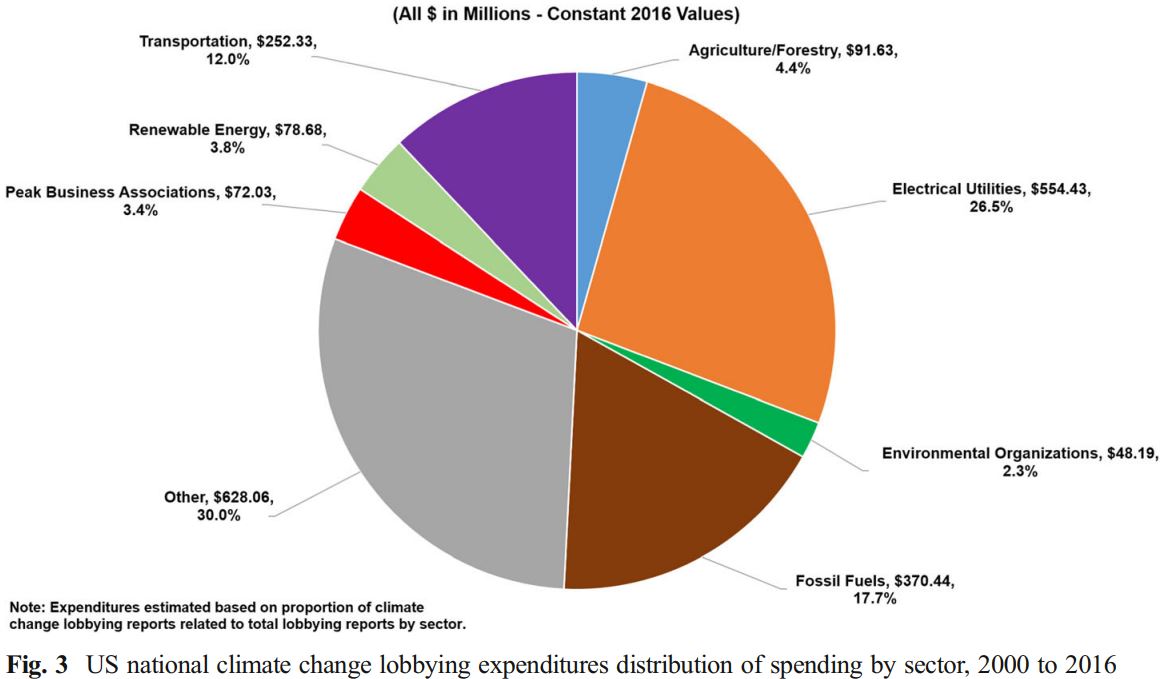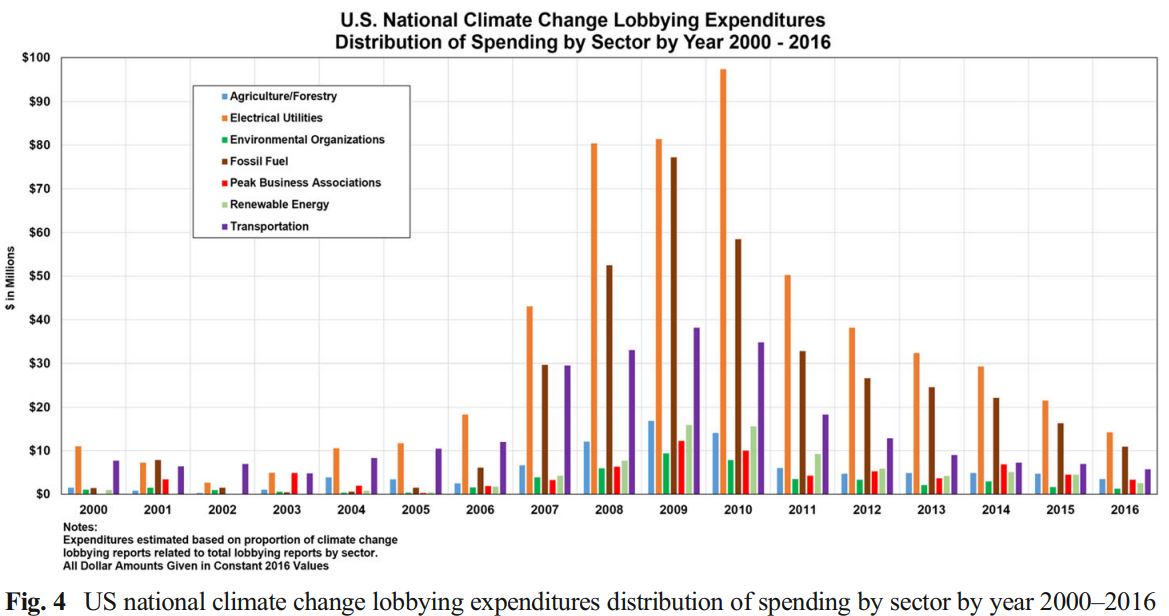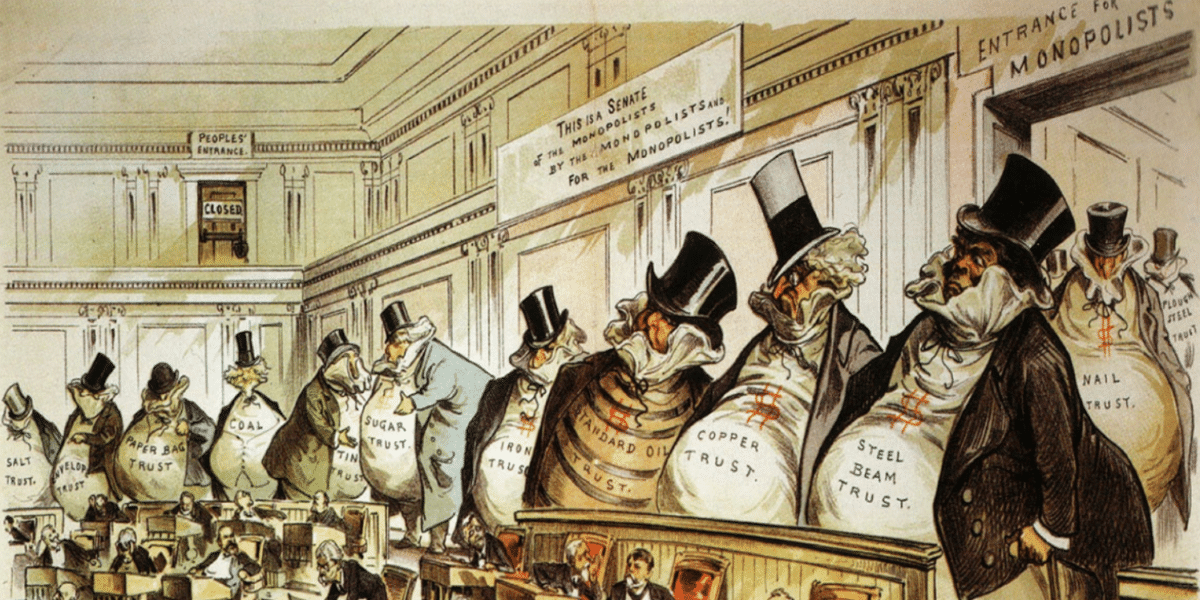If it seems like the U.S. Congress has always been corrupted by business interests, it may be because there is truth to it. In the 1889 lithograph, “The Bosses of the Senate” (Top Image), Joseph Keppler points out the oil, coal, and other interests sitting atop the shoulders of the Senate – dominating the proceedings, writing the laws. Its noted that Senators look to the monopolists for guidance within the capital building, which the general public is barred from entering.
Dr. Robert J Brulle, in The climate lobby: a sectoral analysis of lobbying spending on climate change in the USA, 2000 to 2016 (PDF), focuses on contributions to members of the U.S. Congress related to climate change, and their sources. Climate change-related lobbying comprises just under 4% of the total lobbying officially spent – $53.5 billion – but still totals just over $2 billion. The researcher focuses very tightly on direct lobbying, though noting that equally large amounts are estimated to be spent on SuperPacs and many other related political activities – for instance, paying actors to come out and boo solar power in New Orleans.

The first focus is on where the money comes from – and we see that electrical utilities lead all groups with contributing over 1/4 of lobbying. This group is closely followed by fossil fuel interests at over 17%, and transportation at 12%. These three groups alone submitted over 56% direct lobbying to Congress.

This has led to a ratio approaching 10:1 of lobbying expenditures by electrical utilities, the fossil sector, transportation, and peak business groups versus renewable and environmental organizations.
The research also look into when the lobbying has occurred relative to specific legislative actions. The researcher noted that the Lieberman-McCain Climate Stewardship Act, the American Clean Energy and Security Act of 2009 and the Kerry Lieberman American Power act of the early Obama years drew great volumes of money into Congress.

The purpose of the research is to clearly paint who is funding the U.S. Congress to gain political influence, and the image is clear.
However, the tides may be beginning to shift. The solar and wind industries won a major victory in late 2015 with the extension of the Investment Tax Credit (ITC) and the Production Tax Credit (PTC), as well as fending off the worst potential effects of tax reform last winter.
As the solar, wind and battery industries grow in the United States, their political power increases, and the real power may come through sheer numbers. Solar already employs over 250,000 Americans, and these workers, their families and their communities will represent a larger voting block as the industry continues on its growth path.
This content is protected by copyright and may not be reused. If you want to cooperate with us and would like to reuse some of our content, please contact: editors@pv-magazine.com.









By submitting this form you agree to pv magazine using your data for the purposes of publishing your comment.
Your personal data will only be disclosed or otherwise transmitted to third parties for the purposes of spam filtering or if this is necessary for technical maintenance of the website. Any other transfer to third parties will not take place unless this is justified on the basis of applicable data protection regulations or if pv magazine is legally obliged to do so.
You may revoke this consent at any time with effect for the future, in which case your personal data will be deleted immediately. Otherwise, your data will be deleted if pv magazine has processed your request or the purpose of data storage is fulfilled.
Further information on data privacy can be found in our Data Protection Policy.